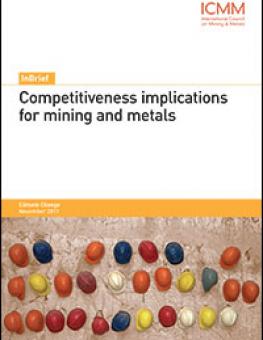
Competitiveness Implications for Mining and Metals
This paper, commissioned by the International Council on Mining and Metals, is an initial step in scoping out the links between carbon pricing policies and the competitiveness of the mining and metals industry.
Different carbon pricing policies in different countries give rise to variation in production costs. This raises the possibility that production in one jurisdiction will become less competitive than in another. As a result, there is the potential for increased imports and a loss of market share in the short term and a relocation of production in the long term, with associated economic and social consequences. This paper reviews such effects, and policies that can be introduced to address them.
Participating experts
You might also be interested in
Artisanal and Small-Scale Mining of Critical Minerals
This report examines the potential for artisanal and small-scale mining (ASM) to take an expanded role in the global supply of critical minerals.
IISD Annual Report 2023–2024
While IISD's reputation as a convenor, a trusted thought leader, and a go-to source on key issues within the sustainable development field is stronger than ever, the work happening outside the spotlight is just as valuable.
IGF Case Study: Decarbonization of the Mining Sector
Case studies from Chile, Indonesia, and South Africa that delve into the role of the mining sector in efforts to reduce greenhouse gas (GHG) emissions.
Senegal's Big LNG Gamble
This report explores Senegal's nascent liquefied nitrogen gas (LNG) industry by assessing the impacts associated with a new fossil fuel-based industry on the country's environment, economy, and society. It does this by responding to three questions: What have been the impacts of the development of LNG on Senegal to date? Is it viable for Senegal to invest further into an industry that is projected to decline? What risks can Senegal expect should it forge ahead with its LNG development plans?